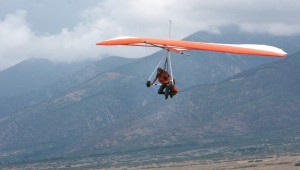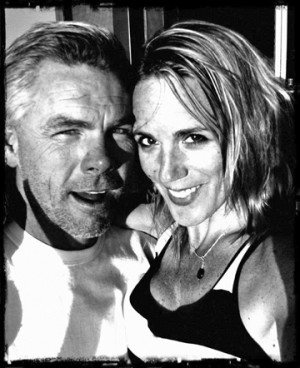By Martha Quillen
The other day someone at the library asked me a history question that I knew Ed could have answered easily. But calling Ed is no longer an option. Every day I find at least half a dozen new reasons for missing Ed, but this was not merely about my sorrow at losing him.
Thankfully, Ed was not the only Colorado history buff around, so I called someone else. But it occurred to me that the regional historians I rely upon are not young anymore, either.
Likewise, I realized that the Colorado I knew when Ed and I got married in the summer of 1969 no longer exists. In those days, we spent our weekends rambling around Grand County, Summit County, Chaffee County, the San Juans, the Gunnison Country and points beyond exploring historic roads, rail routes, and places.
The mountains were emptier then. Although Creede was still a bustling mining town, Breckenridge was tiny, and all of those big box stores and condos you see in Silverthorne, Frisco, Winter Park and Frasier were a mere idea whose time had not yet arrived.
Instead of big chain hotels, a lot of mountain towns offered a choice between run-down historic hotels and old cabin-court motels. But we were young college students, so we camped out. We avoided campgrounds, which were already full of trailers then, and also paved roads, which were awful on the weekends because trailers in that era tended to overheat and break down.
Our equipment wasn’t lightweight nor state of the art, but we had an old army canteen, a Coleman lantern, Perry Eberhart’s ghost town book, and heads full of stories about mountain men, prospectors, mother lodes, train wrecks, avalanches and the like.
We didn’t have a tent, but we didn’t think we needed one. We slept in Ed’s grandfather’s old bed roll, which consisted of a canvas cover that housed piles of old quilts and blankets, and we grilled 29-cent-a-pound steaks, usually over the campfire.
Today, downtown Salida seems to be an up and coming place with art galleries, play holes, restaurants, real estate offices, mini-beaches and a river walk. Although the town’s history still interests locals and visitors, local history isn’t the attraction it used to be. People come here for the scenery, mountain biking, hiking, fishing, and festivals, and every year there are fewer history buffs to call.
But when I was a kid, the Old West was trendier than vampires, zombies, and true tales from the Jersey shore. And some of Central Colorado’s legendary residents were as familiar to America’s youth as Harry Potter. Movies and television shows featured Kit Carson, Wyatt Earp, Doc Holliday, Bat Masterson, Bob Ford, Horace Tabor, Soapy Smith and Molly Brown.
My dad was leery about television and usually only let us watch ball games and Lawrence Welk, but we often visited my grandparents who loved westerns (even though we lived in Michigan) and wouldn’t dream of missing their favorites. Thus I learned the theme songs for Wyatt Earp, Sugarfoot, Cheyenne, the Lawman, Rawhide and Bronco Layne.
Those television westerns didn’t depict the real Old West, because the real west was not especially wholesome. Yet wholesome fare was the law in the 1950s and ‘60s. Censors relegated on-screen married couples to single beds – apparently believing that even the sight of a double bed was suggestive. But instead of eliminating the innuendo, their diligence highlighted it. Long before I knew beds were good for anything besides sleeping, I heard my mother and aunts arguing over whether single or double beds were more appropriate for married couples.
During that era, television churned out countless instructive morality tales – and somehow managed to convert even outlaws, prostitutes, and dance hall girls into lovable preachers. And those Old West characters delivered a powerful message. They exemplified freedom, individuality and perseverance, and showed us all that even hapless drifters could overcome adversity and become heroes.
Whether that was a 1880s message or a 1950s message doesn’t matter. It was an inspiring message. But by the 1980s the Old West was fading in popularity.
For a time the revisionists resurrected the legends by insisting that our forefathers may not have been as valiant as we’d been led to believe. Some people hated revisionism and its precepts. But Ed and I loved having a whole new round of lectures, and presentations about our favorite place: the Old West. And once again, we were visiting museums, monuments, ghost towns, forts and historic homes.
But nothing lasts forever, and now the Old West appears to have been wholly co-opted by the New West, which is significantly different in focus and sentiment. In the New West, the mountains and original peoples are no longer exploited by miners, ranchers, loggers, and settlers. Instead the landscape seems to have been transformed into a giant sporting arena for mountain biking, ATVing, rafting, kayaking, hiking, fishing, jogging and snowmobiling.
It’s a new world that represents different things to different people: escape, adventure, peace, solitude, beauty, nature …
But one of its foremost moral themes appears to be promoting health. Modern westerners worry about the health of people and their environments. Their message is a paean to exercise, fresh air, clean water and organic agriculture.
If you think I’m going to knock that, think again. Health strikes me as an outstandingly righteous goal, right up there with freedom, individuality and perseverance. And I certainly can’t deny its importance – since my own personal hero recently rode off into the sunset far too early.
Sometimes it seems as if Americans can convert everything into an issue, including how other Americans regard history. But I’m less worried about how we regard history, than that we continue to explore history – even from the saddle of a mountain bike.
We live in an ever-changing world, and occasionally we yearn for simpler times, but they don’t exist. People in the 1950s and early ‘60s were more circumspect, but the era was riven by McCarthyism, the red menace, Jim Crow laws and race riots. And yes, the Old West was thrilling, but it was also a dangerous breeding ground for murder, drunkenness, prostitution, rustling, claim-jumping, corruption and disease.
Despite all of the glorious movies about shoot-outs, water wars, range wars, and Indian wars, the deaths in the Old West were real – as real and tragic as the deaths of the Aurora movie-goers who were gunned down at a Batman premiere. Yet sometimes modern Americans talk about violence as if it is a viable solution. To what? The deficit? Our health care problems? How would that work?
At times Americans sound downright eager to duke it out movie-style or even gun down their political adversaries, which is what makes studying local history so important. Despite a decidedly violent and rowdy start, Central Colorado eventually spurned murders, lynchings, shoot-outs and vigilante justice. And that is a truly spectacular accomplishment.
Martha Quillen has researched and written about Colorado history for almost forty years, and knows that her Chaffee County work would be impossible without the extraordinary contributions of Donna Nevens, June Shaputis, Virginia McConnell Simmons, all of the writers and staffers who produced the trio of Salida histories put out by Arkansas Valley Publishing, and the dozens upon dozens of people, many of whom are no longer with us, who have shared their memories and research in books, articles, and interviews.



I came across the article while web surfing. I think I know your son and daughter in law. My best friend and husband Anthony live in s.c. ‘I have been out of contact with them for awhile. But if you are his mom ; I am amazed that I came across this article. Smaller world than we realize. Martha and Anthony acted as God parent for my youngest daughter Brittney.